Unpacking the loaded question of ‘Where are you from?’
Responding to Where Are You From? by Sophie Gresswell
By Xandra Robinson-Burns - 26/08/20
The beginning of artist Sophie Gresswell’s film flicks so quickly through family details, I had to re-watch it a few times to keep up, before realising that perhaps the details are not the point. At the film’s midpoint, the pace slows down allowing the question, and title of the piece to hang in the air: Where Are You From?
It’s a question I must be prepared for around strangers, because it could jump out at any moment. We realise at this point in the film why the narrator was giving a whistle-stop tour of her parental history. She’s searching for an acceptable answer to that vague, probing question. The quick pace suddenly makes sense to me; it’s the feeling of being shaken with that question. The whirlwind of family details is akin to what sometimes rolls off my own tongue, scrambling to answer when caught off guard.
The onus to answer is one that People of Colour must navigate and is especially confusing for those of us with mixed heritage. I’m familiar with a visual we see in the film; a woman hovering her pen over an official form with the options ‘Not quite Black,’ and ‘Not quite white’. She eventually selects ‘Other’. It felt like a victory, just last week, when a government application gave me permission to ‘select all that apply’. I emitted a little ‘yes!’ as I ticked both ‘Asian’ and ‘White’. The week before, I had to choose between ‘Person of Colour’ or ‘White/White Passing’, when I identify as both. I felt forced to be fraudulent, stifled from telling the full story.
A little part of me hoped that this film would be instructional and help me navigate the question because it’s one that I’ve racked my brains over for so much of my life. After each interaction with people I meet, I self-assess: How did I do? Did I represent myself, and all the parts of my identity? Sometimes people ask out of a desire to connect, often to an Asian country I am not in fact from.
“Why do you ask?” I replied in a cafe to a stranger, who said, “oh”, he had wondered if I was Japanese because he was making a Japanese cake. “I’m not Japanese. I’m half-Korean. But I do like cake!” I replied with an extra smile. Gotta encourage cultural appreciation, right? He continued to ask me about Japanese ingredients that I apologised for not being familiar with. I doubled my enthusiasm for the cake, though, because I do like cake. Plus, shouldn’t I be happy he wanted to learn about Japan from someone he thought was a first-hand source? I’m still not really sure.
Gresswell’s film includes its own scene on determination to connect over dessert. The narrator tells a story about her mother, which unfolds before us: the young Mother, having tea with her cockney-accented mother-in-law. When offered ‘a chocolate finger’ the Mother replies, “No thank you, I already have ten!” She’s apparently at ease, joking about her own ‘chocolate’ complexion, but when the laughter dies down, we see her mind wandering. The narrator ponders her Mother’s identity as a sort-of cocoa bean, “plucked from its roots, ground down, moulded, sweetened and shaped into a new form”. The narrator compares her own self to a biscuit, and when probed, a broken biscuit, dunked into a cup of tea. This implication stuck with me: it’s easier to empathise with a biscuit than a person. The Mother just wanted to be accepted and celebrated, like that other fabulous import, chocolate.
When we first glimpse the narrator herself, she’s in the art studio, painting family portraits. No need to find the right words to describe skin tone, when you can paint it, find your own way to express its colour. There is freedom and spaciousness in these painting sequences, suggesting that art’s purpose is not to appease but to find some foundation in one’s sense of self.
Later, we watch as she shifts from artist to gallery viewer, observing interlaying images of past and present. “Maybe we’re from everywhere” she suggests, demonstrating how as individuals, it’s not just about our own stories, but about considering those of others. People of Colour are put on the spot to explain ourselves and to speak for our parents and ancestors; to be prepared to tell stories that have been passed down to us. We are expected to be spokespeople for vast histories we haven’t lived and compelled to show up for what feels like an opportunity to bridge understanding. These histories, Gresswell mentions, can include war, enslavement, and colonialism. We shouldn’t have to answer. We shouldn’t have to choose between the binaries of Black and white on official government forms.
So maybe it’s not about landing on a perfect reply to the question. Maybe, I can let go of the notion that acing the answer will lead to understanding, unity, maybe even world peace. It’s quite a lot of pressure, in casual conversation, often over a cuppa. We could tire over crafting the perfect answer, or, we could be asked a better question.
Where Are You From? is streaming at Fringe of Colour Films, watch it here.
Xandra Robinson-Burns (she/her) is an essayist and the protagonist of Heroine Training She writes about everyday life, and finding wisdom in what we do for fun. Her membership programme, Everyday Wonderland, helps readers find wonder where they already are, away from screens.

